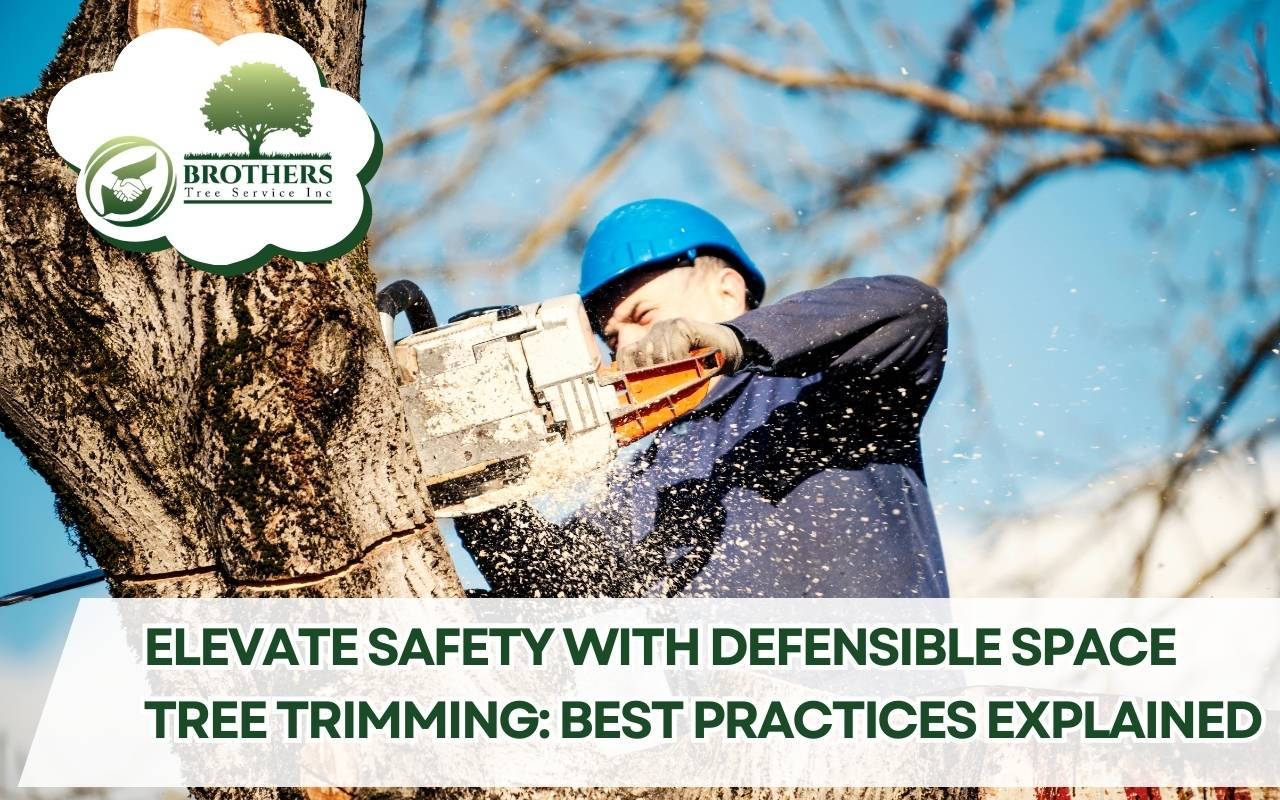
Wildfires have become all too familiar in recent years, devastating landscapes, homes, and communities. Although nature is unpredictable, homeowners can take preventive action. Defensible space tree trimming is one of the most effective ways to safeguard your property. This practice provides safety while offering peace of mind during fire-prone seasons. Defensible space tree trimming is not simple yard cleanup; it is strategic tree maintenance aimed at reducing wildfire risk. By applying the right methods, you invest in both aesthetics and security. Let’s explore how defensible space tree trimming strengthens your property’s resilience against wildfires.
Importance of Defensible Space Tree Trimming
Creating a defensible space starts with minimizing combustible materials that fuel wildfires. Proper trimming removes dead branches and breaks fire pathways. Maintained trees are less likely to ignite during ember showers from distant fires. This approach significantly reduces the chances of flames spreading to your home.
Additionally, defensible space tree trimming improves overall tree health. Removing overcrowded limbs enhances airflow, reduces pests, and strengthens branches. Healthier trees are also less prone to storm damage. Ultimately, trimming secures both safety and the vitality of your landscape.
Assessing Your Property for Vulnerabilities
Begin with a complete assessment of your yard’s topography and vegetation. Identify slopes where fire spreads faster and dense thickets that create fuel ladders. Addressing these areas is essential for effective defensible space tree trimming.
- Zone 1: 0–5 feet from your home, requires strict clearance.
- Zone 2: 5–30 feet, moderate trimming with reduced combustibles.
- Zone 3: 30–100 feet, thinning trees and shrubs as needed.
This zoning approach ensures efforts are prioritized and your property gains maximum wildfire protection.
Selecting the Right Trees for Trimming
Not all trees present equal risks. Species like pines or eucalyptus burn intensely due to high resin content. Replace or trim them when possible. Favor low-flammability species like oaks or maples for safer landscaping.
- Prioritize unhealthy trees with leaning trunks.
- Remove trees showing disease or infestation.
- Focus trimming on structurally weak species.
This method reduces hazards and strengthens your defensible space tree trimming plan.
Timing and Frequency of Tree Trimming
The timing of trimming is crucial. Late winter to early spring is ideal since trees are dormant. Avoid trimming during bird nesting seasons to protect wildlife. Species growth rates determine trimming frequency. Fast growers may need annual trimming, while slower trees need less frequent care. Regular inspections, especially after storms, help maintain your defensible space effectively.
Pruning Techniques for Defensible Space
Proper pruning reduces ladder fuels that allow ground fires to climb into canopies. Remove lower branches up to ten feet, depending on tree height. Thinning the canopy further minimizes fire spread.
Trim no more than 20% of foliage at once. Make clean cuts outside the branch collar for healthy healing. These careful methods sustain tree health while reinforcing defensible space tree trimming practices.
Creating Proper Clearance Around Structures
Protecting your home starts with clearance around structures. Eliminate branches overhanging roofs or chimneys within ten feet. Embers landing on these areas can ignite fires quickly. Horizontal spacing between trees should equal at least twice the tree height. This stops fire from jumping between crowns.
- Clear branches near roofs and siding.
- Space tree canopies to avoid fire spread.
- Maintain defensible tree zones consistently.
Dealing with Dead or Diseased Trees
Dead or diseased trees act as kindling and create hazards during storms. Look for signs such as fungal growth, hollow trunks, or dead limbs. Remove or prune them immediately to reduce risks. Dispose of debris far from your home to prevent fire hazards. Addressing these issues reinforces defensible space tree trimming and prevents emergencies.
Hiring Professional Tree Trimmers
Some trimming tasks require professionals. Certified arborists bring tools, safety expertise, and compliance with local codes. When hiring, check insurance, certifications, and references. A skilled team will assess your property and explain trimming strategies. For more guidance, explore our tree services page.
Relying on experts ensures your defensible space tree trimming follows municipal rules and provides lasting protection.
Maintaining Defensible Space Over Time
Defensible space is not a one-time job. Seasonal inspections are vital for spotting growth, fallen debris, or disease. After heavy storms, examine trees for new vulnerabilities. Encourage family members to help with simple maintenance tasks. For seasonal tips, visit our tree care tips guide.
Regular efforts combined with professional care will keep your landscape resilient. If you need help, reach out through our contact page.
FAQs About Defensible Space Tree Trimming
How often should I trim my trees for defensible space?
Most properties require trimming once a year. Fast-growing species may need more frequent checks.
What is the best season for trimming?
Late winter to early spring is usually best. Trees are dormant and less stressed by pruning.
Can I trim all tree species the same way?
No. Some species are more flammable. Tailor trimming to each tree’s risks and health.
Do I need professionals for defensible space trimming?
Basic trimming is manageable. For tall trees or risky areas, professional services are recommended.
Does defensible space tree trimming harm wildlife?
When done responsibly and outside nesting seasons, it minimizes impact on local habitats.
Ensuring Safety and Peace of Mind
Defensible space tree trimming is an investment in safety and comfort. Strategic buffers, routine care, and expert help form your best defense. Over time, your property becomes both fire-resistant and healthier. Take action today. Learn more about all-seasons tree care and secure peace of mind for your family.
